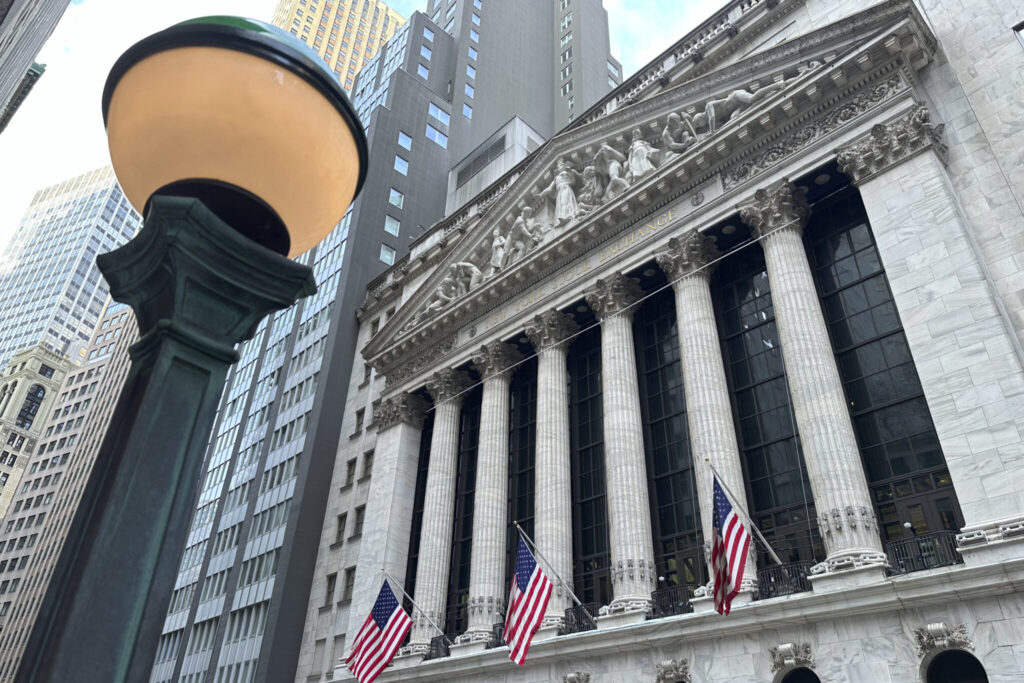Wall Street/ Treasury yields/ stock market/ housing stocks/ oil prices/ global markets/ Newslooks/ NEW YORK/ J. Mansour/ Morning Edition/ U.S. stocks dipped on Monday as Treasury yields rose above 4%, putting pressure on the market. The S&P 500, Dow Jones, and Nasdaq all saw declines, reflecting investor concerns about higher yields making stocks less appealing. Meanwhile, higher Treasury yields impacted housing-related stocks, and rising oil prices contributed to inflation worries.

Wall Street Slips Amid Rising Treasury Yields: Quick Looks
- Market Reaction: S&P 500, Dow, and Nasdaq all down as yields rise.
- Interest Rates Impact: Higher Treasury yields make stocks less attractive to investors.
- Housing Stocks Hit: Rising yields impact mortgage rates, pressuring housing stocks.
- Oil Prices Rise: Brent crude and U.S. oil benchmarks climb, stirring inflation concerns.
- Global Market Movement: Japanese stocks rise as yen weakens, while China preps for market reopen.
Wall Street Dips as Treasury Yields Climb Back Above 4%
Deep Look
On Monday, Wall Street saw a decline as rising Treasury yields placed increased pressure on the stock market. The S&P 500 dropped 0.3% in early trading, and both the Dow Jones Industrial Average and the Nasdaq Composite fell by the same margin. This slide reflects the renewed pressure from bond yields hitting their highest levels since summer, with the 10-year Treasury yield rising above 4% for the first time since August.
U.S. stocks have recently enjoyed a strong rally, thanks to optimism about the Federal Reserve’s potential pivot from aggressive rate hikes to a more balanced economic approach. Friday’s stronger-than-expected jobs report fueled hopes for a “soft landing” for the economy, where growth continues even as inflation cools. However, the robust jobs data also led traders to adjust their expectations, now anticipating that the Fed may hold off on rate cuts longer than expected, pushing yields higher.
Rising Yields Impact on Stock Market and Housing Sector
As Treasury yields climb, they can impact investor behavior across financial markets. Treasury bonds, considered among the safest investments, become more appealing when they offer higher yields, often making stocks and riskier assets less attractive by comparison. The yield on the two-year Treasury note, closely linked to Fed policy expectations, also surged, briefly crossing the 4% threshold after being as low as 3.5% just two weeks ago.
The uptick in yields hit housing-related stocks particularly hard, as higher Treasury rates translate into more expensive mortgage rates, which can reduce homebuyer demand. Builders FirstSource saw one of the largest declines in the S&P 500, falling 2.7%. Home Depot, along with homebuilders D.R. Horton, PulteGroup, and Lennar, all dropped at least 1%.
Other Market Movements and Oil Price Concerns
Elsewhere, shares of Duckhorn Portfolio more than doubled after a private equity firm announced plans to buy the winemaker for approximately $1.95 billion in cash.
In the bond market, the 10-year Treasury yield rose to 4.01%, up from 3.97% late Friday, while the two-year yield increased to 3.98% from 3.92%. The recent jump in oil prices also contributed to higher yields. Worries over potential Middle Eastern tensions disrupting oil supplies have driven up prices, with Brent crude climbing 1.4% to $79.18 per barrel and U.S. crude gaining 1.7% to $75.63 per barrel.
International Market Updates
Globally, markets responded differently. Japan’s Nikkei 225 index gained 1.8% as the yen weakened against the U.S. dollar, a factor that can boost profits for Japanese exporters. Nintendo’s stock rose by 4.4% amid reports that a Saudi wealth fund plans to increase its stake in the video game company.
Mainland Chinese markets will reopen on Tuesday following a weeklong holiday, with anticipation building over new government policies aimed at reviving China’s struggling real estate market. Before the Oct. 1 National Day holiday, Chinese stocks had surged after government announcements of economic support measures.
As the U.S. and global markets respond to bond yields and economic developments, investors are closely monitoring shifts in Treasury yields, which may further influence stock performance and broader economic expectations.







